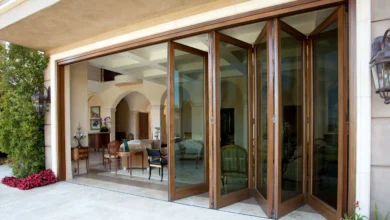Jetliner Cabins: Comfort Design & Passenger Experience

Air travel has changed dramatically over the past few decades, and at the center of this transformation are jetliner cabins. Once viewed simply as rows of seats inside an aircraft, cabins today are carefully designed environments that shape how passengers experience every stage of their journey. From seat comfort and lighting to air quality and in-flight entertainment, jetliner cabins have become a key factor in how travelers choose airlines and remember their flights. Comfort, design, and technology now work hand in hand to create not just transportation, but an experience in the sky.
Table of contents
- What Are Jetliner Cabins?
- The Engineering Balance Behind Jetliner Cabins
- Why Do Jetliner Cabins Matter So Much?
- What Trends Are Shaping Jetliner Cabins?
- Airbus A350: Redefining Comfort in Jetliner Cabins
- Market Growth and Changing Dynamics in Jetliner Cabins
- How Do Cabins Support Passenger Health?
- What’s Next for Jetliner Cabins?
- Conclusion
- FAQs
What Are Jetliner Cabins?
Jetliner cabins are the passenger interiors of modern aircraft. They hold the seats, aisles, storage, lighting, and entertainment systems. In short, they are the space where every traveler spends their flight.
Cabins are more than just functional areas. They define how comfortable, safe, and enjoyable a journey feels. Over the years, cabins shifted from glamorous lounges in the 1970s to efficient, tech-driven spaces today. Airlines now compete as much on cabin design as on ticket prices.
The Engineering Balance Behind Jetliner Cabins
Beneath the sleek surfaces of a jetliner cabin lies a carefully engineered system. Designers must constantly balance three priorities: passenger comfort, airline profitability, and rigorous safety compliance. Every detail—seats, panels, and lighting—must adhere to international aviation standards.
Manufacturers like Airbus and Boeing provide the foundational cabin platforms, while airlines customize them to match brand identity and business models. Take the Boeing 787 as an example: configurations can range from 240 to 330 seats. Some carriers emphasize comfort with wider seating, while others prioritize higher capacity for greater revenue. Even lighting is strategic Dreamliner cabins use soothing blue and amber hues to help minimize jet lag during long-haul journeys.
Why Do Jetliner Cabins Matter So Much?
Cabins matter because passengers care. According to an IATA survey in 2024, 62% of frequent flyers said cabin comfort influenced their airline choice more than ticket price. The cabin is no longer just a space; it is part of the brand.
Airlines see this clearly. Emirates markets private suites. Singapore Airlines promotes extra-wide seats. Even budget carriers emphasize efficient layouts and reliable air quality. The cabin is the heart of the passenger experience
What Trends Are Shaping Jetliner Cabins?
Air travel is growing fast. Airbus predicts passenger traffic will double by 2040. This growth pushes airlines to innovate inside the cabin. Two trends stand out today:
- Sustainability: Lighter materials reduce fuel burn and lower emissions. Recycled composites are becoming common.
- Connectivity: Travelers want seamless Wi-Fi and streaming services. Airlines now install faster systems across fleets.
Wellness is another major shift. Mood lighting and quieter engines are designed to reduce fatigue. Modern HEPA filters refresh cabin air every few minutes. According to Fortune Business Insights, the aircraft cabin interior market will reach $48.9 billion by 2032, growing at 7.5% annually.
Airbus A350: Redefining Comfort in Jetliner Cabins
The Airbus A350 is a strong example of how design shapes passenger experience. Its Airspace cabin offers taller ceilings and wider windows, creating a sense of openness that reduces feelings of confinement.
Another standout feature is its advanced pressurization system, set to the comfort of 6,000 feet rather than the typical 8,000. This difference eases headaches and fatigue, helping travelers feel more refreshed. Airlines such as Singapore Airlines leverage these design elements to elevate their premium image, and the payoff is clear—customer satisfaction consistently climbs when cabins feel spacious, bright, and health-focused.
Market Growth and Changing Dynamics in Jetliner Cabins
The jetliner cabin interior market is experiencing rapid expansion. In 2024, its value stood at $30.1 billion, and projections indicate it could reach almost $49 billion by 2032. This surge highlights the industry’s shift toward greater comfort and eco-friendly solutions.
Airlines today see cabins not as static investments but as flexible spaces. Modular layouts allow quick reconfigurations, enabling carriers to adapt to passenger needs. Premium economy has become a key driver in this shift, generating as much as 15% of long-haul cabin revenue.
How Do Cabins Support Passenger Health?
Cabins today focus on wellness. The system circulates fresh air every two to three minutes. Advanced HEPA filters remove nearly all particles. Lighting systems mimic natural sunlight, which helps the body adjust to time zones.
Seating has also improved. Ergonomic cushions and adjustable headrests reduce pressure points. On long-haul flights, this lowers the risk of circulation problems. Designers address even noise levels. The Airbus A350 and Boeing 787 are among the quietest jets, reducing cabin stress.
What’s Next for Jetliner Cabins?
The future of cabins lies in personalization. Designers are working on modular seating where travelers can choose between work pods, social spaces, or rest zones. Airlines are also testing immersive entertainment using virtual and augmented reality.
Artificial intelligence may soon customize each traveler’s environment. Imagine boarding and finding your preferred lighting, meal options, and entertainment already set. This is the direction cabin design is moving.
Conclusion
Cabins are no longer an afterthought. They are the defining factor of air travel. Two airlines may operate the same aircraft, but their cabin choices create entirely different experiences.
From seat width to lighting, from air quality to Wi-Fi, every element influences how passengers remember a flight. With air travel expanding, jetliner cabins will keep evolving. They are not just a place to sit. They are the future of comfort, wellness, and brand identity in the skies.
FAQs
Q1: What makes jetliner cabins different between airlines?
Airlines design cabins to fit their brand. Emirates focuses on luxury. Low-cost carriers focus on efficiency.
Q2: Are jetliner cabins built with safety first?
Yes. Every component is tested for fire resistance, durability, and emergency use before approval.
Q3: How do cabins help reduce jet lag?
They use lighting systems and lower pressurization. These features help the body adjust more naturally.
Q4: Are sustainable materials used in cabins?
Yes. Airlines are now using recycled plastics, lighter alloys, and eco-friendly fabrics.





